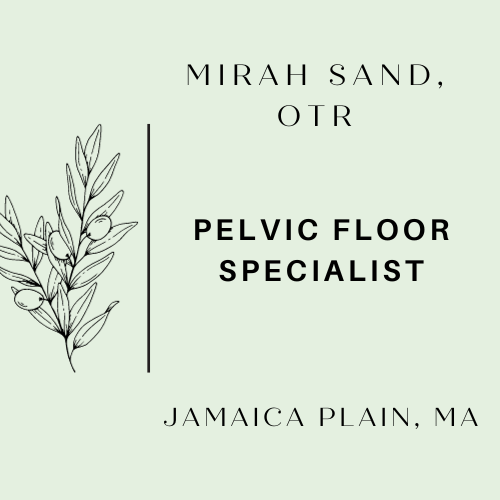Lower Back Pain Postpartum
Many people come see a pelvic floor physical therapist or occupational therapist due to lower back pain postpartum, having never experienced lower back pain before. Why are they only now experiencing this? There can be many drivers to lower back dysfunction, especially as a new parent. Here’s some of the things we would look at:
How is your core functioning: Most postpartum people could benefit from some core rehabilitation after pregnancy. A strong core helps support good body mechanics to prevent lower back pain. If you are experiencing diastasis rectii and/or had a c-section, you may need even more support activating your core in order to protect your other muscles from overcompensating during harder movements.
How are your glutes functioning: Many people experience some glute weakness due to postural changes during pregnancy. In order to protect the low back when lifting your baby, your glutes need to fire effectively.
How are you breathing: Did you know the diaphragm, our main respiratory muscle, connects to the front and the back of your body? This means that when the diaphragm is working optimally, we should have 360 degree expansion of our torso. True diaphragmatic breathing can help restore range of motion and lengthen tissues in your back body. Most of us are shallow, chest breathers, which can restrict range of motion in the low back.
How are you lifting? Think about the literal movements your body made throughout the day before your baby was born. Maybe you went for walks, occasionally lifted groceries to the counter, occasionally bent down to pick up some trash on the floor, worked out a few days a week? When you’re newly postpartum, your body is making repetitive movements that it might not be used to, especially when it comes to lifting. How many times a day are you picking your baby up and putting them back down? You’re suddenly a full-time athlete in a sport that you might not have trained for! Most of us don’t naturally coordinate our posture, core, and breath in order to optimize lifting strategies to prevent low back pain.
How is your posture? Most newly postpartum people are understandably tired and newly adapting to the baby’s routines and rhythms. Depending on your labor, different parts of your body may be sore or tender, resulting in new postural patterns. Additionally, your body may still be accommodating postural changes that occurred as compensations during pregnancy. Think of your new daily routines–are you suddenly sitting on the couch way more, without a lot of lumbar support? Are you rounding your back more when you feed your baby? Posture throughout the day can have a big impact on the lower back overall.
How is your pelvic floor? Did you know that parts of the deep pelvic floor attach to the sacrum and coccyx, aka the bottom of the spine? A hypertonic or overactive pelvic floor is very common, and can contribute to lower back pain.
How often are you having a bowel movement? Constipation in the early postpartum stage is very common! A distended, impacted rectum can irritate the muscles of the pelvic floor and low back.
How is your nervous system? The transition from pregnancy to labor to postpartum can be wonderful, but also challenging. If you find the newly postpartum period stressful or tiring, you’re not alone. Our nervous system plays a huge role in how we manage and interpret pain signals from our bodies. Additionally, stress can manifest as tension in the muscles of the low back.
There are so many understandable reasons why you may have low back pain postpartum. Pelvic floor physical therapy or occupational therapy can be a great resource for getting you back to functioning.
